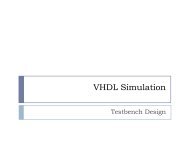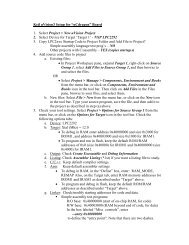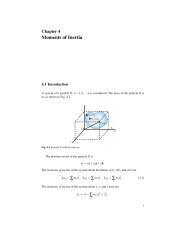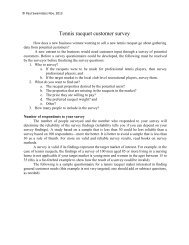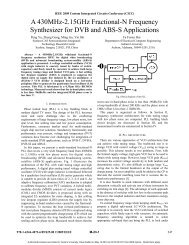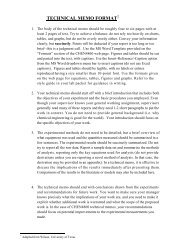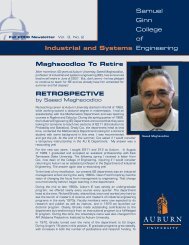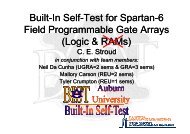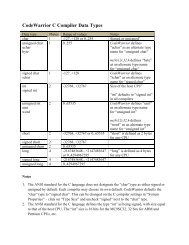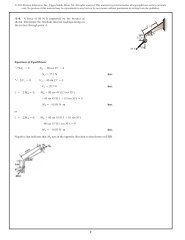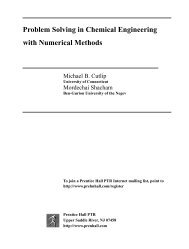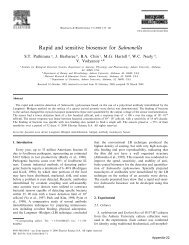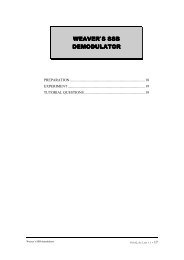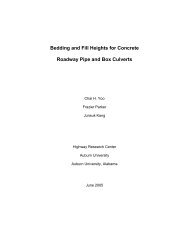Auburn Engineering alumni magazine fall/winter 09 - Samuel Ginn ...
Auburn Engineering alumni magazine fall/winter 09 - Samuel Ginn ...
Auburn Engineering alumni magazine fall/winter 09 - Samuel Ginn ...
You also want an ePaper? Increase the reach of your titles
YUMPU automatically turns print PDFs into web optimized ePapers that Google loves.
Engineer. Professor. Athlete. In the early days of the university,<br />
an <strong>Auburn</strong> man could be all three. Although it may not have been<br />
that common, it wasn’t unheard of for a student’s teacher to be his<br />
teammate as well. Today, more than 100 years later, it cannot be<br />
imagined.<br />
Anthony Foster McKissick, hired in 1890 to fill the adjunct chair in<br />
electrical and mechanical engineering, was all three.<br />
In the classroom and laboratory, he taught<br />
a class of 35 young men––<strong>Auburn</strong>’s first<br />
electrical engineers––including Miller Reese<br />
Hutchison, a talented undergraduate whom<br />
McKissick not only trained but mentored<br />
as well. Hutchison assisted McKissick in<br />
successfully developing an X-ray machine in<br />
the electrical engineering lab, demonstrating<br />
its power by taking an image of a metal key.<br />
McKissick in turn was the first to X-ray a<br />
bullet inside the human body. Hutchison, an<br />
inventor and entrepreneur in his own right,<br />
was later hired by Thomas Edison as his<br />
chief engineer at the turn of the century.<br />
McKissick’s development helped doctors to use the new<br />
technology for diagnoses and never accepted payment, prompting<br />
an article in the Montgomery Advertiser that read “...science and<br />
medicine owe much to the genius of Prof. A. F. McKissick, for the<br />
first apparatus used in the U.S. for the demonstration of the X-ray.<br />
A star fell on <strong>Auburn</strong> where Prof. McKissick gave his valuable<br />
apparatus to the world.” Of course, one has to wonder if there is<br />
more to this successful research story than what can be found<br />
in browning books and aged newspapers, but it has been lost to<br />
history with many others.<br />
On the field, McKissick was fast and powerful and a constant<br />
threat to the opposing team. He was big and bruising and joined<br />
the football team as center. McKissick led his teammates to<br />
victory, including a championship season in 1892. He also served<br />
on the faculty athletic committee and helped form the school’s first<br />
athletic advisory board. It not only raised<br />
funds for athletics, but it also selected the<br />
manager and coach of the football, baseball<br />
and track teams, and even the editor-inchief<br />
and business manager of the Orange<br />
and Blue, the university’s first newspaper.<br />
E n g i n e e r .<br />
P r o f e s s o r .<br />
Athlete.<br />
Miller Reese Hutchison (1876-1944), electrical engineering, class of 1898, was the<br />
inventor of the first electrical hearing aid, which he called the Acousticon; one of the<br />
first eavesdropping devices, the dictograph; and the Klaxon horn. In 1913, he gave his<br />
alma mater its first radio station. Located on the second floor of Broun Hall, the station<br />
was operated under the call letters 5YA and could be heard as far away as Indianapolis.<br />
At the station dedication, Hutchison read the first message, transmitted on a note to<br />
Thomas Edison at his New Jersey Laboratory:<br />
During the past century, engineers like<br />
McKissick and Hutchison have honed<br />
their skills at <strong>Auburn</strong>, going on to share<br />
their knowledge and innovations with the<br />
world around them. They represent 139<br />
consecutive years of <strong>Auburn</strong> <strong>Engineering</strong><br />
and the many graduates who have become astronauts, inventors<br />
and CEOs, while others have revolutionized the alternative energy,<br />
telecommunications, construction and wireless industries.<br />
Though the first engineering classes began two decades before<br />
McKissick and Hutchison came to the Plains, we remember them<br />
fondly during the college’s Centennial Celebration, along with the<br />
multitudes of <strong>alumni</strong> who have left their mark on <strong>Auburn</strong> and the<br />
world.<br />
“This wireless formally christens the two-and-a-half kilowatt apparatus which I have<br />
this day presented to the Alabama Polytechnic Institute in commemoration of the first<br />
homecoming of the <strong>alumni</strong>. The president, the faculty, the <strong>alumni</strong>, and the student<br />
body join me in expressing love and esteem to the father of electrical development.” Miller Reese Hutchison<br />
13



